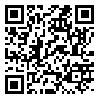Volume 11, Issue 1 (June 2025)
Elderly Health Journal 2025, 11(1): 38-44 |
Back to browse issues page
Download citation:
BibTeX | RIS | EndNote | Medlars | ProCite | Reference Manager | RefWorks
Send citation to:



BibTeX | RIS | EndNote | Medlars | ProCite | Reference Manager | RefWorks
Send citation to:
shahabi kaseb M, Ravanshenas A M, Estiri Z, Mehranian A. The Effect of Physical Activity on Motor Memory in Older Adults: A Comparative Study of Active and Inactive Groups. Elderly Health Journal 2025; 11 (1) :38-44
URL: http://ehj.ssu.ac.ir/article-1-342-en.html
URL: http://ehj.ssu.ac.ir/article-1-342-en.html
Department of Motor Behavior, Faculty of Physical Education and Sports Sciences, Hakim Sabzevari University, Sabzevar. Iran , Mr.shahabi@hsu.ac.ir
Abstract: (443 Views)
Introduction: Cognitive decline is a common consequence of aging, often affecting motor memory, which plays a critical role in performing daily activities. Impaired motor memory may reduce independence and quality of life among older adults. This study aimed to compare motor memory performance in physically active and inactive elderly individuals and to examine the potential role of physical activity in enhancing motor-related cognitive functions.
Methods: This cross-sectional study was carried out in Sabzevar city, Iran, in 2022. A total of 110 elderly individuals aged over 60 years were selected using convenience sampling based on specific inclusion criteria. Participants were divided into two groups—active and inactive—according to their responses to the Sherki Standard Physical Activity Questionnaire. Data collection tools included the Edinburgh Handedness Questionnaire (to assess dominant hand), the Sherki Standard Physical Activity Questionnaire (to determine physical activity levels), the Linear Movement Device (LM-01) (to measure motor performance), and a Motor Memory Test, in which participants were asked to perform linear hand movements over short and long distances. The number of movement errors was recorded as an indicator of motor memory performance.
Results: The analysis revealed statistically significant differences in motor memory performance between the physically active and inactive elderly groups. Specifically, for the short-distance movement task, participants in the active group demonstrated significantly fewer errors than their inactive counterparts (Z = -6.129, p < 0.001). The long-distance movement task, the active elderly group again outperformed the inactive group, showing fewer errors (Z = -8.186, p < 0.001).
Conclusion: The results suggest that regular physical activity is associated with improved motor memory performance in older adults. These findings emphasize the importance of integrating physical activity programs into geriatric care to help maintain cognitive and motor function, promote independence, and enhance overall quality of life in aging populations.
Methods: This cross-sectional study was carried out in Sabzevar city, Iran, in 2022. A total of 110 elderly individuals aged over 60 years were selected using convenience sampling based on specific inclusion criteria. Participants were divided into two groups—active and inactive—according to their responses to the Sherki Standard Physical Activity Questionnaire. Data collection tools included the Edinburgh Handedness Questionnaire (to assess dominant hand), the Sherki Standard Physical Activity Questionnaire (to determine physical activity levels), the Linear Movement Device (LM-01) (to measure motor performance), and a Motor Memory Test, in which participants were asked to perform linear hand movements over short and long distances. The number of movement errors was recorded as an indicator of motor memory performance.
Results: The analysis revealed statistically significant differences in motor memory performance between the physically active and inactive elderly groups. Specifically, for the short-distance movement task, participants in the active group demonstrated significantly fewer errors than their inactive counterparts (Z = -6.129, p < 0.001). The long-distance movement task, the active elderly group again outperformed the inactive group, showing fewer errors (Z = -8.186, p < 0.001).
Conclusion: The results suggest that regular physical activity is associated with improved motor memory performance in older adults. These findings emphasize the importance of integrating physical activity programs into geriatric care to help maintain cognitive and motor function, promote independence, and enhance overall quality of life in aging populations.
Type of Study: Research |
Subject:
Special
Received: 2025/02/26 | Accepted: 2025/05/19 | Published: 2025/06/20
Received: 2025/02/26 | Accepted: 2025/05/19 | Published: 2025/06/20
Send email to the article author
| Rights and permissions | |
 |
This work is licensed under a Creative Commons Attribution-NonCommercial 4.0 International License. |







